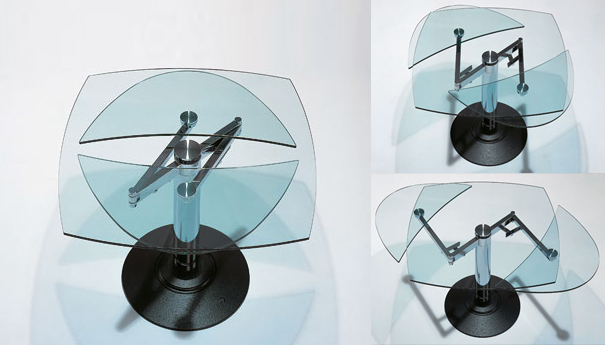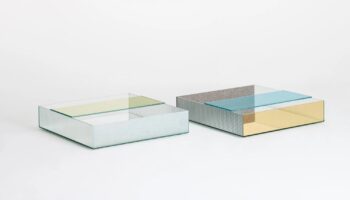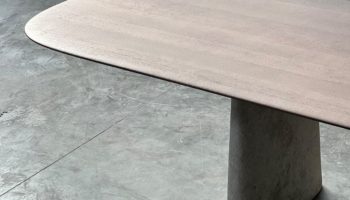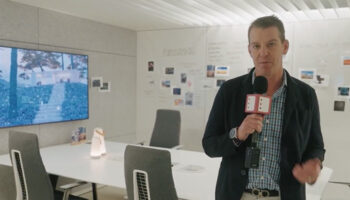1136 Titan III Extensible
How many times have you had friends over for dinner only to realize your dining room table was too small? Then comes the arduous process of finding the extra leaves (in the closet? in the unpleasantly musty garage?), opening the cumbersome locking mechanism, pulling the table apart, inserting said leaves, closing the thing, and attempting to lock all in place.
This ritual is not an enviable one for couples, given the concomitant risks of scuffing the furniture, pinching the fingers, pulling a groin, or enraging a spouse. It’s lucky for us all, then, that trends in contemporary furniture aim for style and functionality. One hallmark of today's best manufacturers and designs is an awareness of how people actually live their lives-the notion that, for instance, it might be useful if a kitchen or dining room table were easily extensible, were slimly designed and wise to space constraints, yet could convert to an eight-seater when needed.
1136 Titan III, glass table. Designed by Georg Appeltshauser. Manufactured by DRAENERT Studio.
The 1136 Titan III, designed by Georg Appeltshauser and manufactured by Draenert, fills the niche. Twin swivel arms rotate 90 degrees and raise the extensible leaves, thus expanding table length from 43 inches to 79. When not in use, the leaves rest underneath the table, out of sight and out of mind... While, not entirely, since the flagship version of the Titan III features a glass top, allowing you to see through it to the leaves, the chrome-plated swivel arms and shaft, and the black-cast base. In this incarnation, the table looks like a museum piece, recalling Modernist and Nouveau Art in the 20s and 30s – a creation that would have been right at home in Paris’ Muse© d'Orsay, with its huge expanses of glass and buttresses of exposed iron and steel.

“The table can be opened with effortless ease. The synchronized rotation of the two leaves covers 90°.”
This artistic quality isn't surprising, given that Draenert has its origins in the intersection of modern art and interior design. In fact, many of its pieces are exhibited in museum collections, including those of the Victoria and Albert Museum in London and the Metropolitan Museum of Art in New York. For us children of the 70s and 80s, however, perhaps a more fitting comparison is the Jetsons meets Marcel Duchamp. While the manufacturer and designer are German (as is the rigorous mechanization), the spirit of the Titan III seems to jibe with Duchamp's vision to see the unrealized potential and beauty of the everyday.
Though I can't see how anyone could resist the version in glass, the Titan III comes in a variety of finishes and colors, including sandblasted-effect lacquer, coloured white glass, MDF veneered, or natural stone-each of which will work perfectly with your varied dining needs.




Leave a Reply